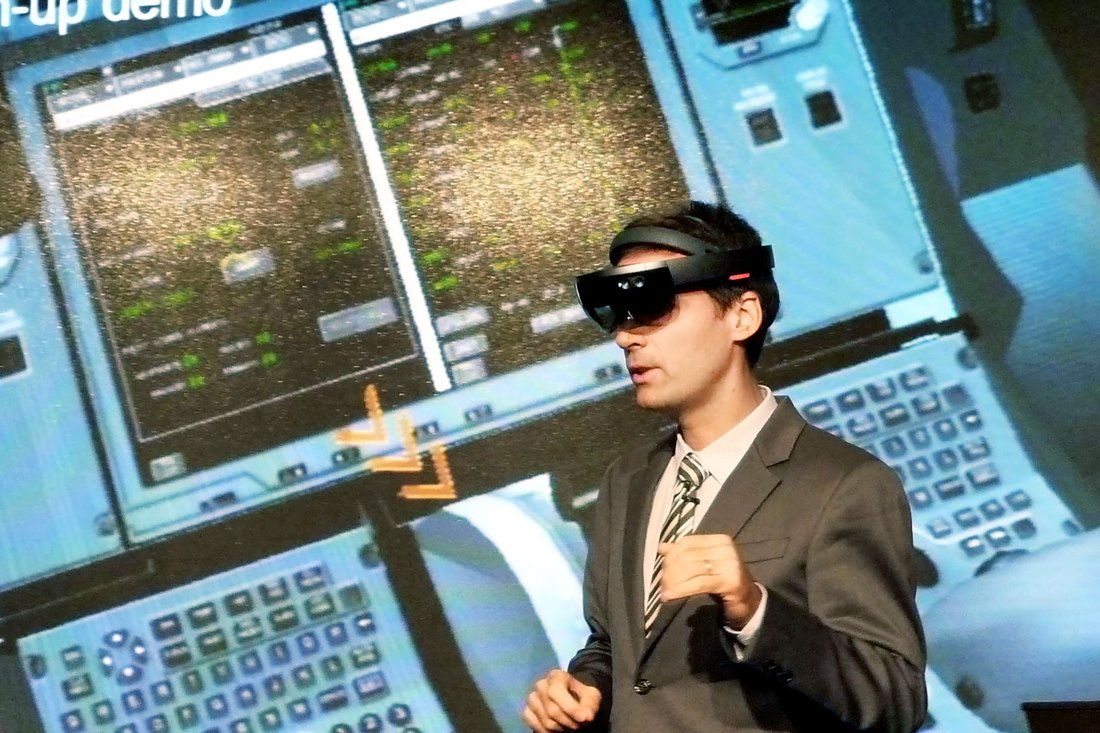美国下一个伟大创意在哪里?

|
不用寻思大概也能知道,过去10年是前所未有的科技增长期之一。它带来的不光是智能手机,还有大量app,可以满足所有能想到的愿望、需求或者爱好。在这10年中,优步变成了名词、动词,也成了一种比喻手段,比如“某某行业的优步”。也是在这10年里,虚拟现实头盔和无人机成了众多日常玩具中的一员,社交支付app Venmo挽救了80、90后的友谊,比特币成了投资者的最爱,尽管这种无国界数字货币的大多数粉丝还没完全弄懂它的原理。得益于名为Crispr的工具,基因编辑变得格外“平易近人”。人工智能则学会了下围棋和“自己”开汽车。如今,以我们口袋里的通讯设备为基础,移动互联撑起了一个完整的经济体系。在2007年,这些创新中的大多数都还没有诞生。 考虑到所有这些因素,断言创新没有以前那么有力,或者说,我们想出的所有这些新点子不知怎的都没有以前那么“物美价廉”,似乎并不合理。但这正是一些经济学家的结论。它值得探讨,原因很多,而且这条结论会对企业、投资者乃至整个社会产生巨大影响。 10年来,尽管涌现出大量创新,但总生产率以及经济产出的增长速度却放慢了。大衰退以来,这两项指标一直偏低,近来的上扬也未能改善情况,它们的年增长率仍介于1-2%之间,而以往的GDP平均增长率接近5%,生产率增速则为3%。此外,收入差距逐年扩大。企业创意带来的经济效益似乎并未得到那么广泛的分享。原本打算改变人们生活方式的新点子并没有结出那种覆盖范围广阔的经济成果,从而真正改善大多数人的生活。 原本打算改变人们生活方式的新点子并没有结出真正改善生活的经济成果。 换句话说,创新的雄心壮志与其影响范围之间存在差异。了解出现这种差异的原因则有助于我们消除它,进而将企业的更多重大创意转换成那种我们一直苦苦求索的共同繁荣。 进入工业化时代后,我们的增长速度一直很迅猛,接近指数级别。经济学家们认为,从某种程度上说,这样的增长源于人数大体不变的研究者和科学家坚持不懈地完成了他们作为研究者和科学家的工作。经济学家们的看法是,这样的持续性应该可以稳定产生一系列新创意,进而推动经济发展。只要这些研究者和科学家的人数基本不变,我们基本上就可以保持飞速发展的潜力。 但人们最近发现这项经济理论有不足之处。今年夏天,麻省理工和斯坦福大学的一批经济学教授和研究生更仔细地考察了研究开支和经济增长的关系。美国国家经济研究局发表了他们题为:《发现创意的难度正在增大吗?》的论文,题目刚好切中要害。读了这篇论文后就会很快明白,没错,创意的难度是变大了,而且成本也大幅上升。 老理论认为持续的研究可带来指数级增长,其最佳例证是摩尔定律,预测说计算机芯片的处理能力差不多每两年就会提高一倍。在40多年的时间里,情况基本如此,我们的手机恰好就能证明这一点,如今手机的计算能力要远高于许多摆满了70年代计算机的建筑物。 但问题在于,带来这种巨变的研究根本没有持续性。实际上,上述论文的作者们发现,和尼克松当政时相比,如今同等研究成果的成本在剔除通胀因素后是那时的78倍。计算机可能比那个时候小得多了,但现在推动计算机发展的人则会站满许多许多建筑物。 这种情况不仅限于科技行业。开展此项研究的教授和研究生们还考察了农业,特别是玉米、大豆、棉花和小麦的产出水平。他们比较了年产量和用于提高农作物产出而投入的研究资金。开支增多了,产量也上升了,但方式可能和大家想的不一样。1960-2015年间农作物平均产量提高了一倍,而用于提高产量的年度研究投资在剔除通胀因素后至少上升了三倍。在某些情况下,或者说某些年份的某些农作物,研究投资增加了25倍。农业在研发方面的投资似乎越来越多,取得的成果则越来越小。 其他领域的情况也是这样。斯坦福大学和麻省理工的经济学家们还研究了医疗科研的生产率,特别是在癌症领域。他们发现后者全面下降。尽管发表的论文变多了,上马的临床试验也增加了,但在每10万人中,得救患者的增长速度不断放慢。虽然取得进展的时刻让人感到惊叹和舒心(在一定程度上就像我们看到癌症免疫疗法那样),但总的来说,付出的更多,效果却更小。如果还想以几十年前那样的速度来救人,我们就得发表更多的论文,并为临床试验投入更多的资金。 当然,研究开支的增长往往会在短期内让个别公司获得回报。《财富》杂志对标普500指数的研究表明,2007-2017年披露研发支出增长的公司有155家,其中逾三分之二,具体来说是108家的股票回报率超过了标普500指数。但跑赢大盘和对整个经济产生全面而积极的影响并非一回事。上述论文的作者们发现,对所有上市公司来说,要让经济增速达到30年前的水平,他们的研发支出就得提高到原来的15倍。结论就是,重大创意,也就是真的能促进经济增长或改善生活水平的创意变得更难发现了,原因是其成本达到了前所未有的高度。 为什么会这样?一个原因是越发难以进行此类创新是因为随着知识进步,基础知识的规模不断扩大。如今,精通多个科学或工业领域所需的教育或培训投资远高于上一代人需要的水平。 另一个原因是纯研究成本。没错,它也在上升。设备价格普遍上涨,而且更加专业化。可以接触到设备的人变少了。同时,就像我们从一台一台的计算机转向超级计算机一样,我们的文化也从个人取得研究突破变为受过高等教育并且要拿酬劳的大型专家团队来设法解决远比以前复杂的问题。我们早已越过了那些低垂的果实,目前正在尝试通过制作工具和建立系统来达到树的顶端。 上述论文以及其他类似著述像是在说,面对创新的枯竭我们只能干瞪眼。别那么绝望。我们也许,甚至很有可能只是在某些领域走到了繁荣期的末尾,就像某些顶端果实已被基本采摘完毕的树木。从发明计算机到IT和互联网的崛起,摩尔定律一直暗流涌动。如今,这股暗流的速度正在放慢,其他因素则有可能在某一天为经济增长贡献自己的力量。 上述报告的作者之一、斯坦福大学经济学博士生迈克尔·韦伯说:“因为遇上了困难,所以创意就见顶了,情况并不是这样。也许,更好的看法类似于石油勘探。在既定的油田中,人们会把大多数石油开采出来,而要开采剩下的那些石油,成本就会非常高。我们在IT这块油田里已经开采了很长时间,但还有一大块我们尚未发现的新油田。” 韦伯指出,其中一块新油田是基因组学,得益于被称为Crispr的基因编辑工具(请参见《正在待命的美国大创意》),这个领域正在涌现诸多新的应用。我们仍处于非常早期的探索阶段,而这些探索有可能发现医学和经济上的大油田,其中那些成本低、数量足的创意将帮助我们降低医疗成本并延长有质量的寿命。虚拟现实也是如此,它出现的时间更长,而且有可能成为未来的首选媒介,进而实现爆炸性增长。 这就引出了同样重要的第二点,那就是现在有众多看起来成本效率不高的技术,但只要它们真的具备了改变的能力,按照以往经验,到那时它们就会变得较为划算。在90年代以前,互联网一直都是学术怪咖的爱好,而今它已经成为经济支柱。 只有我们重视培养和扶持人才,人才群体才会扩大(从而降低创意成本)。 在我接触过的经济学家中,几乎所有人都认为人工智能特别有可能成为创意激发增长和生产率实现极大提升的渠道。在说明新创意会有多贵方面,人工智能也是一个绝佳的例子——它需要巨大的计算能力,众多专业知识,从业者的工资也很高(所以对企业来说很贵)。 美国西北大学经济学家本杰明·琼斯研究的是创业问题,而且即将就人工智能发表论文。他说人口增长可能有助于降低获得新创意的成本,这也许和常识相悖。琼斯解释说:“我们完全可以让更多的人来解决某个问题。”雇用成本应该下降,至少理论上是这样,因为人口远超其他国家的中国和印度仍在融入推动全球经济的研究引擎之中。 但只有在更多的人受过高等教育之后,增加解决复杂问题的人数才会对我们有帮助。换句话说,只有我们重视培养和扶持人才,人才群体才会扩大(从而降低创意成本)。就像进化论生物学家史蒂芬·杰伊·古尔德曾说过的那样:“不知道为什么,我对爱因斯坦大脑的重量和上面的沟回不那么感兴趣,我更关注的是几乎一定有具备同样才能的人在棉花地和血汗工厂里劳作和死去。” 麻省理工经济学家、同样参与上述论文撰写的约翰·范瑞恩曾研究美国的人才培养问题,方法是尝试判断某人做出发明的可能性。他发现,收入排在前1%的家庭生下的小孩成为发明者的几率是收入排在后50%的家庭所生小孩的10倍。他还发现,男性成为发明者的可能性更高,少数族裔进行发明创造的可能性则较低。 范瑞恩的研究完美地展示了机遇问题。如果我们相信来自任何地方的聪明孩子都有可能成为发明者,那么我们就需要支持让这种信念变成现实的政策,因为这种信念对经济以及我们告诉自己的有关美国梦的故事来说都不可或缺。范瑞恩说:“许多孩子甚至都没有机会想象一下成为发明者是什么样,那是什么样的工作以及它看起来像什么。这在很大程度上跟教育、眼界以及允许别人为自己梦想更好的可能性有关。” 范瑞恩意识到,和建起有玻璃幕墙的建筑并让出色的研究者入驻其中相比,他的解决方案似乎不那么漂亮。但基于政策的解决办法,比如为欠缺财力的公立学校提供更多资金这样简单的做法,有可能比其他旨在填补创新缺口的复杂办法便宜得多。范瑞恩说,在一个越发以知识为动力的经济中,“这就是那些低垂的果实”。 |
It’s possible, without squinting, to gauge the past decade as one of unprecedented technological growth. It ushered in not only the smartphone, but with it a cornucopia of apps for every imaginable want, need, or obsession. It was a decade in which Uber became a noun, a verb, and an analogy too—as in, the “Uber of X.” In these same 10 years, virtual reality headsets and drones joined the litany of everyday playthings; millennial friendships were saved by Venmo; and a completely stateless digital currency became an investor darling, even if most of Bitcoin’s fans still don’t quite grasp how it works. Genetic editing became extraordinarily accessible thanks to a tool named Crispr, and A.I. went from mastering Go to becoming the “self” in self-driving cars. There’s now an entire economy based on the mobile connectedness that’s built on the devices in our pockets. In 2007, most of these innovations didn’t exist. So given all that, it would seem absurd to suggest that innovation is somehow less potent than it once was—that, somehow, all those new ideas we’re generating are offering less bang for the buck. But that is precisely what one group of economists have concluded. And it’s worth assessing their argument for a number of reasons, because it has enormous implications for businesses, investors, and society as a whole. Over the past decade, even as innovation has soared, growth in overall productivity as well as economic output has slowed. Both remain at anemic levels even after recent upticks, hovering at annual rates between 1% and 2% since the Great Recession, whereas historical averages are closer to 5% GDP growth and 3% productivity rates. Plus, year by year, income inequality has widened. The economic benefits of the business world’s new ideas do not seem to be so widely shared. The new ideas that were meant to transform the way we live aren’t unleashing the kinds of broad economic benefits that actually make life better for most people. Ideas that were meant to transform the way we live aren’t unleashing the economic benefits that actually make life better. Put another way: There’s a gap between the ambitions of our innovations and the scale of their impact. Understanding the causes of that gap could help us close it—and, in turn, convert more of business’s big ideas into the kind of broadly shared prosperity we’ve been pining for. We have been in a period of remarkable, near-¬exponential growth since the beginning of the industrial age. Economists have explained this growth as the result, in part, of a more or less constant number of researchers and scientists diligently doing what researchers and scientists do. That constant, economists held, was supposed to be capable of producing a steady stream of new ideas that would, in turn, generate economic expansion. So long as the number of researchers and scientists is held in a relative constant, so is the potential for very strong growth. But lately, cracks have begun appearing in this economic theory. This summer, a group of economics professors and graduate students at MIT and Stanford took a closer look at the link between research spending and economic growth. The title of their working paper, published by the National Bureau of Economic Research, got right to the point: “Are Ideas Getting Harder to Find?” Reading the paper, one quickly learns that, yes, ideas are getting harder to find, and a lot more expensive too. The best example of the old theory—that constant research leads to exponential growth—is Moore’s law, which holds that processing power on a computer chip doubles approximately every two years. This has pretty much been the case for more than 40 years, as happily evidenced by our mobile phones, which hold more sheer computing power than many buildings full of 1970s computers. The problem, however, is that the research that has driven such a tremendous change hasn’t been a constant at all. In fact, as the “Ideas” paper’s authors found, the cost of such research efforts requires 78 times the funding today in inflation-adjusted dollars as it did when Nixon was President. The computers may be much smaller, but now it’s the people driving their advances that fill many, many buildings. This trend isn’t limited to the tech sector. The study’s authors also looked at agriculture, specifically the yields of corn, soybean, cotton, and wheat. They compared the annual yields with funding for research into improving crop productivity. Spending increased, and so did yields, but not in the way you might expect. While the average yield doubled between 1960 and 2015, the annual inflation-adjusted investment in research to improve those yields increased at least threefold. In some cases—for certain crops, over certain years—the research investment increased by a factor of 25. Agricultural businesses seem to be spending more and more on R&D, all while getting less and less out of it. It’s the same story in other fields too. The Stanford and MIT economists also looked at productivity in medical research—specifically in cancer. They found declines in productivity across the board. Even as more papers were published and more clinical trials mounted, the growth in the rate of lives saved per 100,000 people has continued to slow. While individual moments of progress bring astonishment and relief (as we’ve seen to some extent in cancer immunotherapy), on the whole more effort is yielding less impact. We need to publish even more papers, spend even more on clinical trials, if we hope to keep up the pace of lifesaving treatments we were developing decades ago. Sure, increases in research spending tend to pay off in the short term for individual companies. A Fortune study of the S&P 500 showed that of the 155 that reported increased levels of R&D spending between 2007 and 2017, more than two-thirds—108 companies in all—had stock returns that beat the index’s. But generating stock market outperformance isn’t the same thing as having a broad, positive impact on the economy as a whole. Across all publicly traded companies, the “Ideas” paper’s authors found that to produce the same rate of growth our economy experienced 30 years ago, companies would need to spend 15 times as much on R&D. The bottom line: Big ideas—the ones that truly drive economic growth or a change in the standard of living—are harder than ever to find because they’re more costly than ever before. Why is that so? One reason that such innovations are increasingly difficult to come by is because, as knowledge advances, the base of fundamental knowledge grows. Just to be proficient in many fields of science or industry today requires an investment in education or training that is significantly higher than it was a generation ago. Another factor is the cost of pure research. Yes, that’s growing too. Equipment has generally become more expensive and, relatedly, exclusive. Fewer people have access to it. And just as we’ve moved from single computers to supercomputers, we’ve moved from a culture of individual researchers making breakthroughs to one of massive teams of highly educated and compensated experts attempting to solve far more complicated problems. We’re way past the low-hanging fruit, trying to build the tools and systems that will get us to the tippy-top of the tree. The “Ideas” paper, and others like it, might make it sound as though we’re staring down the barrel at the end of innovation. Do not despair. It is entirely possible, even likely, that we’re simply approaching the end of boom times in particular fields, the tops of certain already well-trimmed trees. From the discovery of computers to the rise of IT and the Internet, we have the undercurrent of Moore’s law, churning away. Now, that current is slowing down—but others could someday lend their velocity to a growing economy. “It’s not true that because we’ve hit a hard place, we’ve reached peak ideas,” says Michael Webb, a Ph.D. candidate in economics at Stanford and one of the study’s authors. “A good way to think of it, perhaps, is like prospecting for oil. Within a given oilfield, you get most of the oil out, and it becomes really expensive to get the rest. We’ve been pumping out the oil from IT for a very long time now, but there’s a whole new oilfield out there we haven’t found yet.” One such field, Webb suggests, is genomics, which is experiencing a flourishing of new applications thanks to the gene-editing tool known as Crispr (see “America’s Big Ideas in Waiting”). We’re still in the very early, exploratory days of what may become the medical and economic equivalent of a rich oilfield of cheap and abundant ideas that pay off in reduced medical costs and longer productive life spans. The same goes for virtual reality, which has been around for longer, and may end up being the media of choice in the future—driving explosive growth. Which brings up a secondary but no less important point: There are plenty of current technologies that won’t look cost-effective unless and until they really do become transformative—at which point, in hindsight, they will appear to be relative bargains. The Internet was a geeky academics’ hobby until the mid-1990s. Today it’s an economic pillar. The talent base only grows (making ideas cheaper) if we make a point of cultivating and supporting talent. Nearly every economist I spoke to pointed to artificial intelligence as an especially likely avenue of ideas that could catalyze enormous leaps in growth and productivity. A.I. is also a great example of how expensive new ideas can be: The computing power required is enormous, the expertise tremendous, and the jobs incredibly well-paying (and thus costly for employers). Benjamin Jones, an economist at Northwestern who studies entrepreneurship and has a forthcoming paper on A.I., says that, in perhaps a counterintuitive way, population growth can help reduce the cost of generating new ideas. “We’re fully able to throw more people at the problem,” he explains. Costs of employment should level off, in theory at least, as China and India—by far the two most populous nations—continue to integrate into the research engines feeding the global economy. But having more people to throw at complex problems helps us only if more people are highly educated. In other words: The talent base grows (making ideas cheaper) only if we make a point of cultivating and supporting talent. As the evolutionary biologist Stephen Jay Gould once put it, “I am, somehow, less interested in the weight and convolutions of Einstein’s brain than in the near certainty that people of equal talent have lived and died in cotton fields and sweatshops.” John Van Reenen, an economist at MIT and another of the “Ideas” paper’s authors, has performed studies that look at talent cultivation in the U.S. by trying to determine the likelihood of someone becoming an inventor. He found that those born into the top 1% income level were 10 times as likely to become inventors as those born into the bottom 50%. He also found that men were more likely to be inventors, and minorities less likely. Van Reenen’s research nicely illustrates a problem of opportunity. If we believe that a smart kid from anywhere could become an inventor—a belief that is integral to both the economy and the story we tell ourselves about the American dream—then we need to support the policies that make that possible. “Many kids don’t even get the opportunity to imagine what it would be like to become an inventor, what that job is, what it looks like,” says Van Reenen. “A huge part of this is education, exposure, allowing someone to dream of better possibilities for themselves.” Van Reenen realizes that his solution might not seem as sexy as erecting a steel and glass-walled building filled with brilliant researchers. But policy-based solutions as simple as improved funding to underfunded public schools could be a much cheaper solution to closing the innovation gap than other, more complex fixes. In an increasingly knowledge-fueled economy, Van Reenen says, “This is the low-hanging fruit.” |
有望成为美国伟大创意的技术/America’s Big Ideas in Waiting
By:Erica Fry
Crispr

|
今年初,俄勒冈的研究者改变了人类胚胎的DNA。利用Crispr这种类似于分子剪刀的突破性基因编辑技术,科学家们修复了胚胎DNA中的遗传性心脏病缺陷。这项曾经无法想象、几乎和上帝一样的工作只是一系列令人吃惊的Crispr试验中的一次。近年来,这些实验风靡了整个科学界。 技术的快速进步,具体来说是自行引导的菌体蛋白,让科学家们得以用较快的速度来剪除和编辑有问题的DNA,这种能力蕴含的前景很诱人,那就是治疗(甚至治愈)人、植物或者动物的基因疾病和变异。想想抗旱庄稼和不受父母遗传疾病影响的孩子吧。还有许多问题有待解决,但科学家们已经在用Crispr等工具来为老鼠恢复听力,创造低脂肪猪并延缓蘑菇褐变。 |
Earlier this year, researchers in Oregon changed the DNA of human embryos. Using Crispr, the breakthrough genome-editing technology that acts like a sort of molecular scissors, the scientists repaired a genetic mutation—a heritable heart condition—in the embryonic DNA. That once-unthinkable, almost God-like feat is just one of a number of stunning Crispr experiments that in recent years have taken the scientific world by storm. The rapidly evolving technology—¬actually self-guided bacterial proteins—allows scientists to snip and edit problematic DNA with relative quickness and speed, an ability that holds tantalizing promise for treating (or even curing) genetic disease and mutation, whether it be in humans, plants, or animals. Think drought-resistant crops and children free of their parents’ hereditary diseases. There are still plenty of kinks to work out, but scientists have already used Crispr to, among other things, restore hearing in mice, create low-fat pigs, and delay the browning of mushrooms. |
虚拟现实/Virtual Reality

|
虚拟现实看上去也许是面向视频爱好者和游戏玩家的精彩技术,而且多少仍有些笨重,另外对网络购物、聊天和娱乐有一些辅助作用。但休闲并不是虚拟现实头盔所要擅长的东西。虚拟现实及其“表亲”增强现实也在改变和改善我们的工作表现。 沉浸式虚拟体验的实际应用非常多,既可以加快和丰富产品开发(工程师和制造人员可以在虚拟环境中进行预览和调整),也能培训医科学生并强化外科医生的技能(他们可以在进行高难度手术前做练习)。运动员可以用它来为大赛做准备;房地产专业人士可以用它来展示住宅和空间;记者和娱乐业从业者可以用它来丰富自己的内容。从空客到福特,再到万豪酒店和嘉年华邮轮,都已经发现了虚拟现实的用处。 毕竟,体验是最好的老师,而且有了虚拟现实技术后,大家就越来越不需要借助真实世界来获得体验了。 |
It may seem like virtual reality is a nifty, if still somewhat clunky, technology for video enthusiasts and gamers—albeit with tangential benefits for online shopping, chatting, and entertainment. But leisure isn’t all those headsets are going to be good for. VR and its cousin augmented reality are also changing and bettering the way we perform at work. The practical applications for immersive, virtual experience are myriad—from speeding and enriching product development (engineers and manufacturers can preview and tinker virtually) to training medical students and sharpening the skills of surgeons (who can practice before tricky procedures). Athletes use it to prep for big games; real estate professionals use it to show homes and spaces; and journalists and entertainers use it to enhance their content. Corporations from Airbus to Ford to Marriott to Carnival (the cruise line) have all found uses. After all, experience is the best teacher, and increasingly—often because of VR—you don’t have to depend on the real world to get it. |
人工智能/Artificial Intelligence

|
对于人工智能的崛起人们已经幻想和焦虑了几十年,现在这场革命(甚至是奇点)看来终于要出现了。从亚马逊Echo这样的声控助手到自动驾驶车辆,机器正迅速地变得聪明起来,这要感谢最近在“深度学习”方面的突破。深度学习让软件在获得不断积累的大量数据(这些数据又得到了不断提升的计算能力的处理)后掌握相关模式,从而以远远超过人的速度和可靠性来完成复杂的任务。 也就是说,对于人类不能完全胜任的好费时间的工作,比如挑选股票、诊断疾病、侦测赝品以及寻找药物靶标,机器或许更加合适。在某些情况下,机器能让我们的工作更有效率;在另一些情况下,它们会让我们变得过时。这场竞赛的风险是如此之高,以至于俄罗斯总统弗拉基米尔·普京把它比喻为当今的太空竞赛——今年早些时候他对一些学生表示,谁在人工智能领域领先,谁就能统领世界。(财富中文网) 本文刊登在2017年12月15日出版的《财富》杂志上,题为《填补美国的创意缺口》(Closing America’s Idea Gap)。 译者:Charlie 审校:夏林 |
After decades fantasizing—and fretting—about the rise of artificial intelligence, the revolution (if not the singularity) finally seems nigh. From voice-activated assistants like the Amazon Echo to self-driving cars, machines are swiftly getting smarter, thanks to relatively recent breakthroughs in “deep learning.” Deep learning enables software—fed with ever-accumulating reams of data (that gets processed with ever-increasing computer power)—to recognize patterns and perform complex tasks much more quickly and reliably than humans ever could. That means machines may be better suited to the time-consuming activities we humans do imperfectly—like picking stocks, diagnosing disease, detecting fraud, and identifying drug targets. In some cases, machines will make us more productive in the jobs we have; in others, they’ll make us obsolete. The stakes in this race are so high that Russian President Vladimir Putin has framed the matter as a modern-day space race: Whoever leads in A.I., he told a group of students earlier this year, will rule the world. A version of this article appears in the Dec. 15, 2017 issue of Fortune with the headline “Closing America’s Idea Gap.” |













